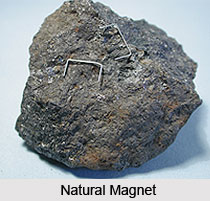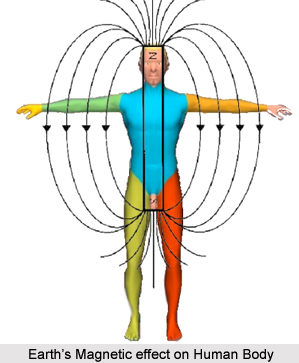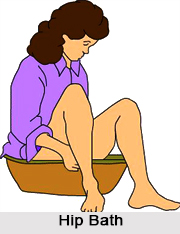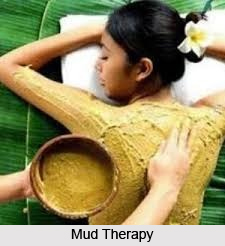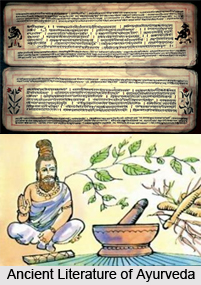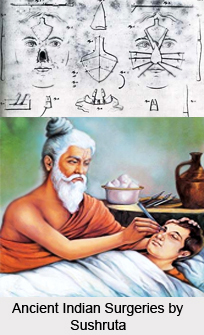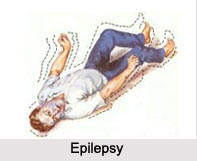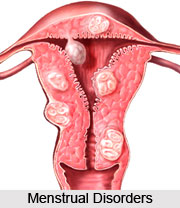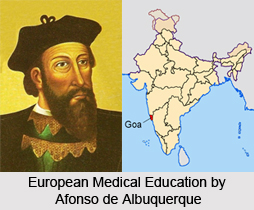 The Royal Hospital was founded by Afonso de Albuquerque soon after his conquest of Goa on St Catherine"s Day - November 25, 1510. It was the pride of successive viceroys of Goa and rulers of Portugal who bestowed great care on it. It was rapidly acclaimed as one of the best hospitals in the world.
The Royal Hospital was founded by Afonso de Albuquerque soon after his conquest of Goa on St Catherine"s Day - November 25, 1510. It was the pride of successive viceroys of Goa and rulers of Portugal who bestowed great care on it. It was rapidly acclaimed as one of the best hospitals in the world.
Arrival of European Medical Education on Indian Soil
Attempts at teaching western medicine to the natives actually started around 1546. The Jesuit priests at the "Collegio de Sao Paulo dos Arcos" or the "Seminario Da Santa Fe", founded in 1541 taught medicine along with theology, mathematics, astronomy and philology. It is noteworthy that this institution is Asia"s first western style university. It was to the chapel of this university that Xavier"s body was taken on its arrival in Goa on March 16, 1554. Father Francisco Cabral lectures on medicine every morning. The conferment of degrees at this college often took place in the presence of the viceroy and other high officials. The teaching of medicine started here was later augmented.
In 1591, the administration of the Royal Hospital was placed in the hands of the Jesuits. This hospital was the finest in the world, whether for beauty of the building and its apparatus, the accommodation being in all respects excellent, or for the perfect order, regulation and cleanliness observed, great care taken of the sick, and the supply of all comforts that can be wished for. It is of very great extent, situated on the banks of the river and endowed by the kings of Portugal.
There are physicians, surgeons, apothecaries, barbers and bleeders who do nothing else and are bound to visit each of the sick twice a day. The apothecary is one of the household and lives in the hospital and has his shop well stocked at the hospitals expense. Several of these observations were corroborated by other visitors. In spite of its greatness, the mortality rate in the Royal Hospital appears to have been excessive. Cholera, scurvy, enteric fever and venereal disease took their toll.
Decline of European Medical Education on Indian Soil
By the mid-17th century, the medicine at Goa was on the decline. Tavernier noted that the hospital too had decayed, with poor treatment of patients. The lack of a steady supply of young, well trained doctors was also being increasingly felt. In 1687, Dom Christovam de Souza Coutinho recorded that patients at the Royal Hospital are abandoned to themselves without any medical aid. The physician Gasper Antonio was old, almost blind. Dom Christovam then recorded a plea that was to be repeated at intervals until well into the 19th century; if two or three physicians came from Portugal they could teach medicine to many natives, who are very clever and would easily learn it and turn not the worst physicians, so that the fisico-mor would have many physicians to help him in the treatment of patients, the vassals of his majesty. They would also be able to visit pharmacies and examine the medicines, which, for being very often stale and corrupt, if they do not kill the patients, do not work successfully on them.
It is obvious that the fisico-mor taught medicine to natives in addition to treating patients at the Royal Hospital in Goa. In Goa, as later in Calcutta, Madras and Bombay the principal factor motivating foreign doctors to teach medicine to natives was not a desire to overcome deficiencies in the native practice of medicine but rather to bring up a second grade of assistants unto themselves so that their own burdens would be relieved.
In 1694, six Goan students were selected to go to Coimbra University to learn medicine at the expense of the Goan village communities as the people suffered hardship for want of proper medical assistance. The situation worsened both for the natives and for their rulers. Public health was accorded low priority. Sicknesses proliferated and death statistics reached unimagined heights. Eventually the government lacked funds for the proper support of their establishments, and the Royal Hospital was but one of those downgraded as a consequence. In the second half of the 18th century, Dom Luis Da Costa of Portugal was commissioned to study the causes of the fearful epidemic that was raging throughout Goa.
Rise of European Medical Education on Indian Soil
In 1770, Secretary of State in Portugal, Martinho de Melo e Castro wrote to the viceroy; the want of a professor which is felt throughout the state will perhaps be remedied by the establishment of a school of medicine and surgery with practical medicine being taught in the Royal hospital. This is the first time that the formation of a medical school, anywhere in India, to teach scientific principles and practice was suggested.
In 1785, Francisco Manuel Barroso Da Silva arrived in Goa bearing the chief surgeon"s appointment to devote himself to teaching medicine to the natives of India. Da Silva brought with him some instruments and other items needed for medical and surgical work but he was unable to start a course in medicine as urged for want of a building to accommodate his class.
In the meanwhile, as noted above, want of trained medical personnel led too much suffering and high mortality at the Royal Hospital. These struck governor Francisco Antonio Da Veiga Cabral who arrived in Goa in 1794 so harshly that he repeatedly asked the home government to remedy the situation and send him a fisico-mor who would not only superintend the Royal Hospital and treat the patients but would also teach medicine and surgery to the natives. After several reminders and the passage of a few more years, Antonio Jose e Miranda e Almeida was appointed fisico-mor by royal decree in November 1799.
Antonio Jose reached Goa in January 1801 and immediately took charge of his office. He stayed in Goa till 1816 when he returned to Portugal. He started a 3 year course of lectures in medicine and surgery under the auspices of Aula de medicina e cirurgia de Hospital Militar de Goa. This school was to develop, on November 5, 1842 into the Escola Medico-Cirurgica de Nova Goa. Figuerado and De Mellow have traced the development of the medical school.
Related Articles
Ancient History of India
Vedic Civilisation in India
Sushruta
Sushruta Samhita
Traditional Indian Medicines





